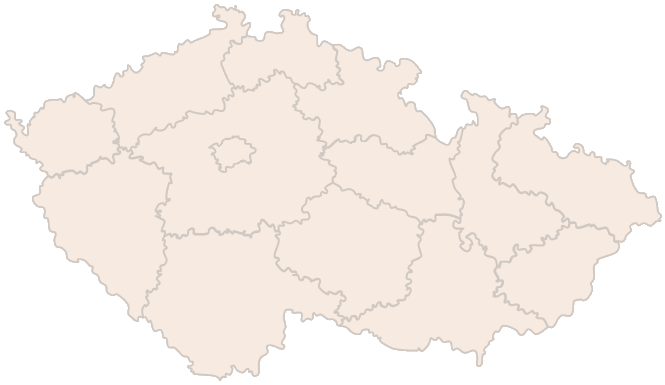Basic classification of assets: fixed assets vs. current assets
The distinction between types of assets is not just an accounting formality. In practice, it can fundamentally affect a company’s tax burden, financing options and the success of legal action – for example, in debt collection, foreclosure or asset pledging. The legal framework is the Accounting Act.
A company’s assets are most often classified according to the period of time they are used for business. The first category is fixed assets (in other words, fixed assets). These are assets that the business intends to use for more than 12 months. Typically, this includes buildings, land, machinery, cars, but also software or securities.
The second category is current assets. This includes assets with a shorter useful life or quick turnaround – for example, cash, inventory, accounts receivable, materials or finished goods.
A distinction needs to be made between these two categories of assets not only from an accounting point of view but also from a tax and legal point of view. For example, fixed assets are depreciated while current assets are not. Also, in insolvency or pledge proceedings, the different categories are viewed differently.
Are you solving a similar problem?
Are you unsure about your company's assets?
Whether you’re dealing with car classification, accounting depreciation or the difference between fixed and current assets, we’re here for you. Ask us – you’ll get an answer within 48 hours.
I have a question
- When you order, you know what you will get and how much it will cost.
- We handle everything online or in person at one of our 6 offices.
- We handle 8 out of 10 requests within 2 working days.
- We have specialists for every field of law.
Fixed assets and their subcategories
Fixed assets are further subdivided into three main groups:
1. Tangible fixed assets
Tangible fixed assets include items such as buildings and structures, land (although not depreciated), production equipment and machinery, and transport equipment. Tangible fixed assets are not held for immediate consumption.
In general, these are physically existing assets whose acquisition cost exceeds a specified accounting threshold (currently CZK 80 000 for depreciation) and whose useful life exceeds one year and are not intended for immediate consumption or sale.
Tangible fixed assets are depreciated so that their cost is gradually expensed over their expected useful life.
2. Intangible fixed assets
This category consists mainly of software and applications, licences and know-how or copyrights and industrial rights (e.g. trademarks, patents).
Unlike tangible assets , intangible assets do not have a physical form, yet they are often essential to a business – for example, in IT, marketing or science and research.
Intangible fixed assets also have an expected useful life of more than one year.
3. Financial fixed assets
Businesses often invest in securities or shares in other companies. If the intention is to hold these financial instruments for more than one year, they are non-current financial assets. This includes stocks and shares, long-term loans to other entities and equity holdings.
From a legal perspective, these assets may represent a significant instrument of control over other companies and may therefore have a significant impact on the structure of the corporate group.
Current assets in detail
Current assets (short-term financial assets) are a variable component of assets – they include anything that is quickly consumed, exchanged or converted into cash within the enterprise. These are assets that a firm holds for up to one year.
Typical items are:
- Inventories: materials, goods, work in progress, finished goods.
- Accounts receivable: e.g. from customers, employees or tax overpayments.
- Short-term financial assets: cash, cash in bank accounts, securities, short-term securities.
Current financial assets are used to support the day-to-day operations of the business. It is an important indicator of a firm’s liquidity. From a legal perspective, it may be subject to pledge, execution or other restrictions on disposal.
Small assets: a practical dilemma for accountants and lawyers
Minor assets are not a separate category under the law, but it is a practical term for assets that do not reach the accounting limit for fixed assets. Nevertheless, it is often tracked in the so-called operating records. Examples of small tangible assets include chairs, monitors, printers and hand tools.
Companies usually have internal regulations that determine the value threshold at which assets are recorded as fixed assets. Although less expensive, small tangible assets can be of great value to the business in terms of operations – so they are often tracked separately, particularly because of employee liability or the possibility of theft. Its recording is not a legal obligation, but in many cases it is strongly recommended.
How it works in practice:
Imagine a common situation: a company buys several laptops, each worth CZK 25,000. This amount does not reach the accounting threshold of CZK 80 000 for inclusion in tangible fixed assets, so from an accounting point of view it is so-called small tangible assets. Nevertheless, it is advisable to record these items in the so-called operational records, which are set up internally by the enterprises.
Why? Because of the employees’ responsibility for the property entrusted to them. Furthermore, because of the overview and control over the equipment (e.g. during an inventory or change of employee). And in the event of damage or theft, it is clearly traceable what has been entrusted to whom.
Therefore, many companies set their own limits for record keeping internally – for example, all assets over CZK 5,000 are tracked, even if they are not “fixed” assets in the accounting sense.
The difference between a small asset and an expense from a tax recognition perspective
The basic difference lies in the method of accounting treatment and the impact on the tax base. Small assets (tangible and intangible) below a set limit (e.g. CZK 80,000 for tangible assets, CZK 60,000 for intangible assets) are usually charged directly to expense – i.e. in full and in one lump sum. This expense is tax deductible if it was incurred to earn, secure and maintain income.
Fixed assets, on the other hand, are depreciated – their value is reflected in costs gradually over time. This has an impact on the timing of tax costs.
From a legal and accounting perspective, it is therefore important to know when it is more advantageous to expense an asset directly and when to record and depreciate it – not only for tax purposes, but also for the sake of clarity and protection of company assets.
Tip for article
Tip: Have you made nice candles or have a surplus of apples and want to sell them at the stall? Then you should know that stall sales have clear rules that you must follow.
Company assets from a legal perspective
From a legal perspective, the assets of a business are the sum of all the assets, rights and other property belonging to the entrepreneur and used for the operation of its business. It includes both tangible assets (e.g. buildings, machinery, inventories) and intangible assets (software, licences, trademarks, know-how), both long-term and short-term (current).
Importantly, the company can legally dispose of these assets – for example, by selling them, mortgaging them or contributing them to the company as a non-cash contribution. All of these assets form the basis from which legal relationships are derived in various changes in the structure of the company.
A special regime arises when a company enters liquidation or insolvency, when a company is merged or divided and when a business plant is transferred. When a business (or part of it) is sold, it must be clearly defined what is the subject of the transfer. The most common transfer is of a so-called business plant, i.e. an “organised group of assets” as defined by the Civil Code.
In all of the above cases, close cooperation between lawyers and accountants is essential, as the lawyers assess the validity and transferability of property rights (e.g. contracts, licences, ownership) and the accountants ensure that the items transferred are accurately accounted for and valued and assess their impact on tax liability and profit or loss.
Summary
A business’s assets form the basis of any business and include everything that the business owns and uses for its activities – from buildings, machinery and software to cash, inventory and receivables. The basic division of assets is into fixed assets (buildings, machinery, software, securities) and current assets (cash, inventory, receivables), with each type having different accounting and tax rules and legal significance – for example, in depreciation, insolvency or pledge. Fixed assets are divided into tangible, intangible and financial assets; current assets include rapidly consumable or turnover items. Although small assets (e.g. laptops up to CZK 80,000) do not fall into the category of fixed assets, companies often record them for employee liability and asset protection. From a legal perspective, it is the set of all items, rights and assets used in the business that a company can dispose of (e.g. sell, pledge, contribute to the company), which is crucial in restructuring, liquidation or insolvency.




